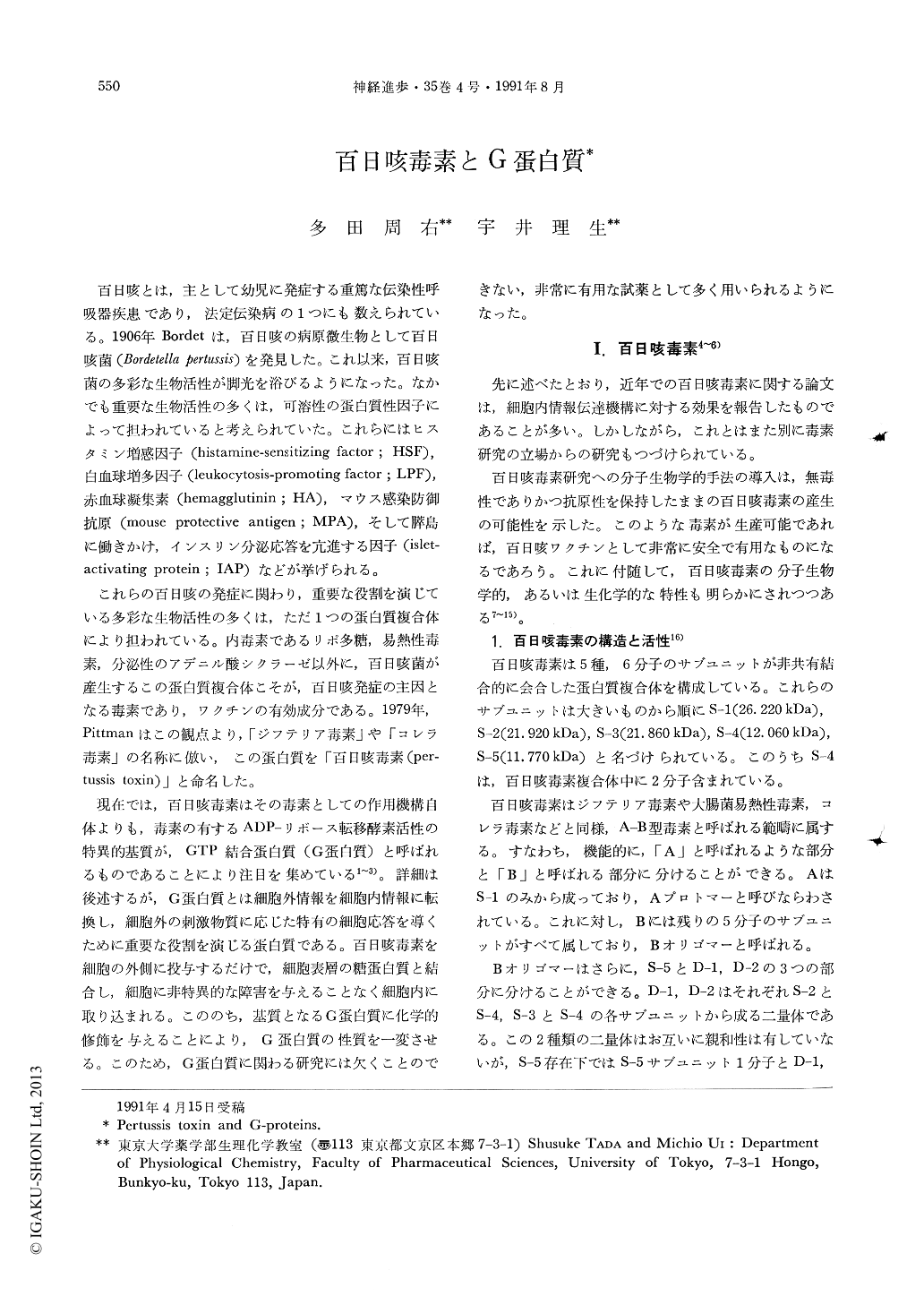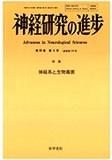Japanese
English
- 有料閲覧
- Abstract 文献概要
- 1ページ目 Look Inside
百日咳とは,主として幼児に発症する重篤な伝染性呼吸器疾患であり,法定伝染病の1つにも数えられている。1906年Bordetは,百日咳の病原微生物として百日咳菌(Bordetella Pertussis)を発見した。これ以来,百日咳菌の多彩な生物活性が脚光を浴びるようになった。なかでも重要な生物活性の多くは,可溶性の蛋白質性因子によって担われていると考えられていた。これらにはヒスタミン増感因子(histamine-sensitizing factor;HSF),白血球増多因子(leukocytosis-promoting factor;LPF),赤血球凝集素(hemagglutinin;HA),マウス感染防御抗原(mouse protective antigen;MPA),そして膵島に働きかけ,インスリン分泌応答を亢進する因子(islet-activating protein;IAP)などが挙げられる。
これらの百日咳の発症に関わり,重要な役割を演じている多彩な生物活性の多くは,ただ1つの蛋白質複合体により担われている。内毒素であるリポ多糖,易熱性毒素,分泌性のアデニル酸シクラーゼ以外に,百日咳菌が産生するこの蛋白質複合体こそが,百日咳発症の主因となる毒素であり,ワクチンの有効成分である。
Toxins produced by Bordetella pertussis, the causative agent of “whooping cough”, contribute to the virulent and symptoms of this disease. One of these toxins, termed pertussis toxin, is used to study mechanisms of cellular signaling. Pertussis toxin catalyzes the transfer of ADP-ribose from NAD to specific guanine nucleotide-binding proteins (G proteins), thereby disrupting their functions and producing characteristics of the disease.
The pertussis toxin protein is a hexamer composed of five dissimilar subunits. The toxin molecule is dissociated into biggest subunit and the residual pentamer as a result of the allosteric action of ATP. The biggest subunit is referred to as an A (active) protomer, whereas the pentamer acts as a B (binding) oligomer. The A protomer is incapable of entering mammalian cells unless it forms the hexameric structure by association with the B oligomer which binds directly to particular sites on the cell surface.

Copyright © 1991, Igaku-Shoin Ltd. All rights reserved.


